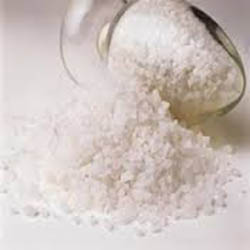SSodium is the sixth most abundant element in the Earth's crust - it is a soft silvery metal, which oxidizes to a greyish white colour rapidly in the presence of oxygen. Sodium can be easily cut with a knife, and is a good conductor of electricity. Approximately 85% of sodium in the body is found in blood and lymph fluid.
Function of Sodium in the Human Body
Sodium regulates the total amount of fluid in the body, controlling both the body blood and osmotic pressure and the transmission of sodium into and out of individual cells. This function plays a role in critical body functions. Sodium is the main cation in blood plasma and cellular extracellular fluid which carries out nutrients and wastes transportation. The sodium-potassium pump is also necessary for muscles to contract. Positive charge cation ion produces electrical impulses that travel along nerves, needed for muscle function.
Sodium Deficiency
Many conditions including congestive heart failure, liver failure, kidney failure and pneumonia are commonly associated with a low sodium concentration in the blood [1].
| Signs | Symptoms |
|---|---|
| Muscle spasms or cramps | Muscle weakness |
| Vomiting | Poor appetite |
| Lethargy | Headache |
| Reduced consciousness | Fatigue |
| Irritability | |
| Short-term memory loss | |
| Nausea | |
| Confusion |

